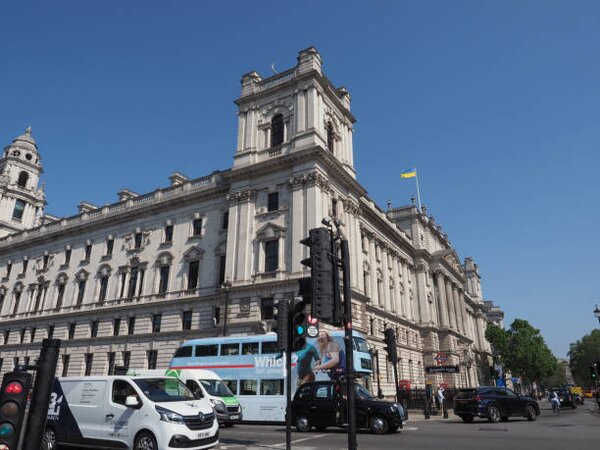Let’s Break This Down Together...
Capital allowances sound complicated, don’t they? They can feel like a mystery when you’re trying to figure out what you can claim and how it saves you tax.
This article explains what plant and machinery capital allowances are and the different types you can use. We’ll also cover which assets qualify and the steps to claim them with confidence.
By the end, you’ll see how these allowances can reduce your tax bill and improve your cash flow. It’s practical, money-saving stuff, let’s dive in!
Introduction to Capital Expenditure
Capital expenditure, often referred to as capital expenditures or “capex,” is the money a business spends to acquire, upgrade, or extend the useful life of its fixed assets. These assets can include plant and machinery, property, vehicles, and other equipment essential for running and growing your business. Unlike day-to-day operating costs, capital expenditure is an investment in the long-term future of your company.
When your business invests in new machinery, upgrades existing equipment, or purchases property, these costs are not immediately deducted from your profits. Instead, you can claim tax relief through capital allowances, including plant and machinery allowances. This means you can deduct a portion or sometimes all of the cost of these assets from your taxable profits, reducing your overall tax bill.
Capital allowances are designed to encourage businesses to invest in assets that will help them operate more efficiently and competitively. By claiming these allowances, companies can recover part of their investment in plant, machinery, and other fixed assets, making capital expenditure a smart financial move. Whether you’re a small business or a large company, understanding how to claim these deductions can make a significant difference to your profits and cash flow.
What are plant and machinery capital allowances anyway?
Plant and machinery capital allowances are tax reliefs that let you deduct the cost of business assets from your profits before tax. Capital allowances work by offering different types and rates, which determine the percentage of an asset's cost that can be written off each year for tax purposes. They recognise that your business assets wear out over time.
These allowances are available to all business types - sole traders, partnerships, and limited companies. If you’ve bought assets for business use, you could claim, and relief is claimed by businesses when they purchase qualifying assets.
Unlike accounting depreciation, capital allowances follow specific tax rules set by HMRC. They’re often more generous than standard depreciation methods. Claiming capital allowances reduces your taxable income, which lowers the amount of tax payable.
The rules determine which assets qualify and how much you can claim each year. Claiming capital allowances can improve your cash flow by reducing taxable profits. Allowances are based on the expenditure incurred on qualifying assets.
These allowances apply to a range of trade activities, including professions and vocations. Property occupiers who incur capital expenditure on commercial property can also benefit from these allowances.
Eligibility for allowances is determined by the qualifying activity associated with the asset. The allowances cover most types of plant and machinery used in business.

Types of capital allowances you need to know about
There are different types of capital allowances available for plant and machinery, each with its own rules and rates.
The Annual Investment Allowance (AIA) lets you deduct 100% of qualifying expenditure incurred up to £1 million in the year of purchase. For most businesses, this is the most valuable relief when claiming capital allowances. First Year Allowances (FYA) give 100% relief on environmentally friendly investments like electric vehicles. They’re designed to encourage green business practices.
Writing Down Allowances (WDA) apply when you’ve used up your AIA. The main pool is subject to the main rate of 18% per year, calculated on a reducing balance basis. Some assets only qualify for the special rate of 6%. These assets go into the special rate pool, which includes integral features in buildings and assets with a long life.
After the main pool and special rate pool, other assets may be allocated to single asset pools for separate treatment. From April 2023, “Full Expensing” allows companies to claim 100% relief on main rate plant and machinery. This replaced the previous “super-deduction” scheme.
What assets qualify for plant and machinery allowances?
Most types of business equipment qualify computers, machinery, tools, office furniture, and vehicles. These are all typically eligible for capital allowances. Fixtures, such as fitted kitchens or bathroom suites that become part of the property, are also eligible for plant and machinery allowances.
Cars qualify too, but the CO2 emissions determine the allowance rate. Zero-emission cars get 100% first year allowances.
Buildings generally don’t qualify, though there’s a separate buildings allowance called the Structures and Buildings Allowance (SBA), which provides a flat-rate 3% deduction for certain non-residential structures and buildings. This allowance is not available for residential property. Land never qualifies for capital allowances.
Integral features like electrical systems, plumbing, and heating qualify at the special 6% rate. These are considered part of the building but receive special treatment. If you use assets for both business and personal purposes, you can only claim for the business portion. I learned this the hard way with my first business car!

How to claim your capital allowances
You claim capital allowances on your tax return - either self-assessment if you're self-employed or company tax return. The process is straightforward once you understand the categories. Timing matters! Assets count for the accounting period in which you bought them. Planning purchases around your year-end can be smart tax planning.
Keep detailed records of all your asset purchases, including dates and costs. HMRC may ask to see these during an enquiry. Consider seeking advice for complex situations or large purchases. The rules can get tricky, especially for property-related expenditure.
Review your capital allowances position annually. As your business grows, different strategies might become more beneficial.
Capital Allowances for Commercial Property and Buildings
Capital allowances for commercial property and buildings offer valuable tax relief for businesses investing in their premises. When you incur capital expenditures on fixed assets within your commercial property such as installing air conditioning, thermal insulation, or external solar shading you may be eligible to claim capital allowances.
These allowances let you deduct the cost of qualifying expenditure from your taxable profits, reducing your tax liability and freeing up cash for further investment. The annual investment allowance (AIA) is particularly useful for businesses making significant investments in their property.
The AIA allows you to claim a 100% deduction on qualifying expenditure up to the annual limit, which can include assets like solar panels, integral features, and other plant and machinery installed in your building. For example, if your business fits solar panels to a warehouse, you can claim capital allowances on the cost, directly lowering your taxable profits for that year.
To qualify, the expenditure must be incurred on assets used for business purposes, and the business must be subject to UK tax. It’s important to keep detailed records of all capital expenditures, including invoices and installation dates, to support your claim. Given the complexity of capital allowances for structures and buildings, seeking professional advice can help ensure you’re claiming the correct amount and maximising your tax relief.
By making the most of these allowances, businesses can turn necessary property investments into significant tax savings.

Smart strategies to maximise your allowances
If you're planning big purchases, consider spreading them across different accounting periods. This helps make the most of your Annual Investment Allowance. Consider making a "short-life asset election" for items you expect to replace within 8 years. This can accelerate your tax relief considerably.
When selling business assets, time the disposal carefully. Selling at the right time can help manage any balancing charges. For cars, the tax benefits of choosing electric vehicles are substantial. The green choice is often the tax-efficient choice too.
If cash flow is tight, leasing might still give you tax relief through different rules. This works even though you don't own the asset outright.
Recent changes you should know about
The Annual Investment Allowance of £1 million has been made permanent from April 2023. This provides certainty for business planning. "Full Expensing" now gives 100% relief for companies on qualifying plant and machinery. This replaced the 130% "super-deduction" that ended in March 2023.
Enhanced Capital Allowances for energy-efficient equipment have been replaced. The new First Year Allowance covers environmentally beneficial items. For electric cars, 100% first year allowances will continue until April 2025. This makes them an attractive option for businesses looking to reduce emissions.
The government regularly reviews capital allowances, so stay up-to-date with changes. These could significantly affect your business tax position.
Final Thoughts
Plant and machinery capital allowances are one of the best tax reliefs available to businesses. They reward investment and help with cash flow by reducing tax bills. The rules might seem complex at first, but understanding the basics helps with purchasing decisions. Timing these decisions can make a substantial difference.
Good record-keeping is essential to support your claims and avoid problems with HMRC. Keep invoices and details of how assets are used in your business.
With the right approach, capital allowances can form a key part of your business tax strategy. They turn necessary purchases into valuable tax advantages.











